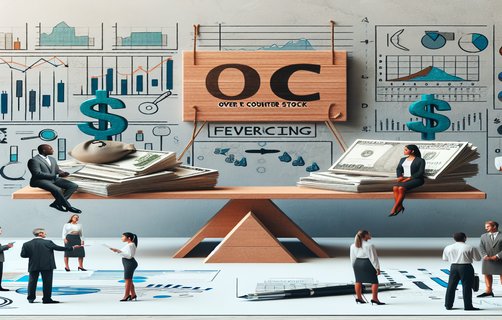
In a world where unpredictability lurks around every corner, leadership has evolved into an art form akin to solving an intricate puzzle. Imagine navigating markets and crises as if you were decoding a Fibonacci sequence—each decision building on the last, forming patterns that are both seemingly chaotic and profoundly structured.
At first glance, the concept of applying mathematical elegance like the Fibonacci sequence to everyday leadership may seem out of place. Yet, when we peel back the layers of uncertainty, we discover that successful leaders embrace this nonlinear force, blending calculated risk with creative intuition. They meticulously balance high-reward opportunities with the inherent risk of fluctuating circumstances, much like a master strategist playing a game where each move is as precise as it is daring.
Take for instance the case of a major technology firm that found itself at the crossroads during an economic downturn. The company’s CEO, much like an agile chess master, employed strategies that resembled the balanced yet unpredictable play observed in natural systems. By focusing on flexible planning and incorporating feedback loops into every decision, the leader was able to pivot away from potential pitfalls and steer the ship steadily through stormy economic seas. It wasn’t about having a fixed plan but rather an evolving strategy that adapted on a step-by-step basis, much like iterating through a Fibonacci sequence of ideas.
This approach to leadership is most visible in high-stakes environments where the risk of failure is always looming, yet the potential rewards are equally significant. Leaders who master the art of nonlinear thinking are not deterred by the concept of 'crime' in volatility—where the uncertainty itself can feel like a violation of predictable norms—but instead, they view each unforeseen turn as a chance to innovate. In essence, such leaders transform each crisis into an opportunity, offering what might be seen as a 'cashback reward' for every strategic risk taken and every calculated leap of faith made.
Notably, the art of decision-making in these times has a step-by-step tutorial approach built right into the leadership mindset. First, leaders identify the variables at play. Next, they alternate between data-driven analysis and intuition, reminiscent of tracing the Fibonacci numbers, where each number brings its own significance to the series. They then balance the scales, weighing immediate risks against long-term gains. In doing so, they draft a playbook that is both resilient and adaptable, ensuring that their decisions sustain the momentum even when the external environment is in flux.
Real-world examples abound. Consider the leadership at a multinational retail corporation that restructured its supply chain amid global trade disruptions. The leaders at the helm identified early warning signals and quickly reconfigured distribution strategies by allocating resources dynamically—the chaos of the moment was harnessed just as much as it was understood. By doing so, they not only minimized losses but also capitalized on opportunities to serve a reassured customer base. Their decision-making, influenced by both analytics and human insight, mirrored the perfect balance of a complex, nonlinear system that finds beauty in disorder.

Another striking example comes from the financial sector, where an investment firm employed a strategy based on risk tolerance similar to a balanced play mechanism. They integrated a model that rewarded a 'cashback' for moderate risks, thus ensuring that even when some decisions led to losses, the overall portfolio retained a benefit structure that encouraged continued investment. This is a powerful reminder that leading through uncertain times isn’t about eliminating risk entirely; it’s about managing risk in such a way that every setback offers an opportunity for a comeback—a veritable renaissance of innovation in the face of adversity.
Alongside these strategies, effective leadership requires impeccable communication and transparency. Leaders should articulate their vision and strategic reasoning with clarity, just as a well-crafted tutorial guides its audience through each step without relying on overused expressions. This clarity in communication not only builds trust but also fosters a collective sense of purpose among team members, analogous to a synchronized Fibonacci series unfolding in real time.
Moreover, the central role of leadership during turbulent times is amplified by the need to nurture resilience and agility within organizations. When the unexpected strikes—be it market volatility, economic slowdowns, or unforeseen global crises—leaders must act swiftly yet judiciously. They must inspire their teams to see beyond the immediate 'crime' of chaos, to embrace the broader arc of transformation and growth.
Interactive Questions:
1. Which element of Fibonacci-inspired strategic planning do you find most applicable to your professional environment?
2. How can leaders balance risk and reward when faced with rapid, unexpected changes?
3. In your experience, what role does transparency play in effective decision-making during a crisis?

4. What innovative leadership strategies have helped you navigate uncertainty successfully?
FAQs:
Q1: What does a Fibonacci approach to leadership mean?
A1: It involves creating patterns of strategic decisions that build iteratively and symbiotically, balancing risk with reward in a methodical yet adaptable way.
Q2: How can nonlinear thinking improve decision-making?
A2: Nonlinear thinking allows leaders to anticipate multiple outcomes, adapt quickly, and recognize opportunities even in ostensibly chaotic situations.
Q3: Why is transparency important in uncertain times?
A3: Transparency builds trust, aligns team efforts, and fosters a culture where informed risk-taking can lead to meaningful innovation.
Ultimately, mastering leadership amidst uncertainty is less about following a strict rulebook and more about developing a flexible, analytical, and inspiring mindset. Leaders who can navigate this labyrinth with both precision and heart are the ones who will stand resilient in the face of ever-changing challenges.


Comments
Alice
I loved the analogy of Fibonacci numbers in leadership; it really makes the concept of strategic risk-taking more tangible.
张伟
The step-by-step examples were very straightforward. It feels like the article provides a practical guide for leaders.
Liam
Combining real-world examples with creative storytelling was a brilliant approach. I'm intrigued by the idea of leadership as an evolving sequence.
Sofia
The explanation of balancing risk and reward in such a dynamic way is refreshing. Definitely a new perspective for managing uncertainty.
李娜
I appreciate the interactive questions at the end. They're thought-provoking and encourage deeper reflection on leadership strategies.